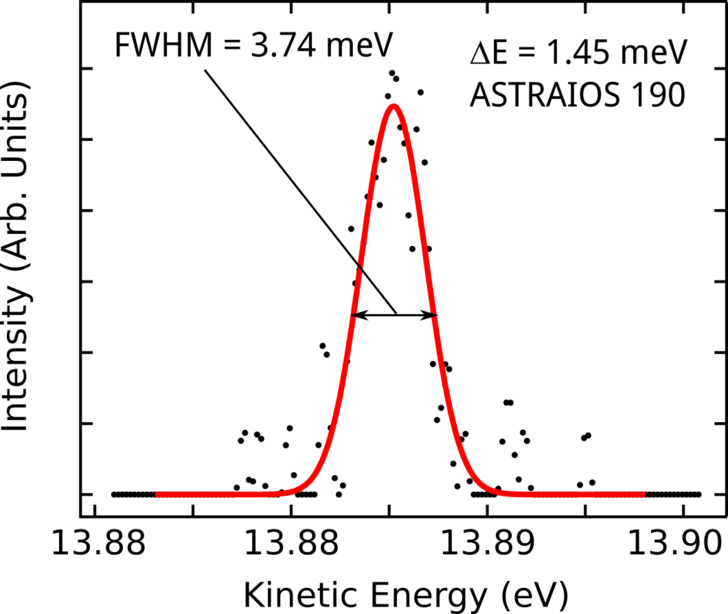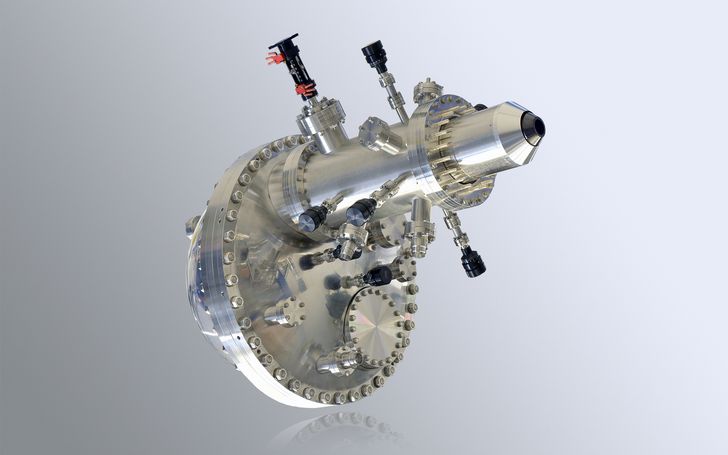Off the cuff demonstration of target analyzer energy resolution of <1.5 meV
Among the most important tests of a new analyzer generation is the evaluation of its resolving power. We are more than proud to report that in the very first attempt the ASTRAIOS 190 has reached an energy resolution of 1.45 meV just after switching on the experiment, without any optimization. This value is on the technological edge of what is possible with Gas cell measurements. Such experiments are typically complicated and often depend on much more than the analyzer itself. Among those tests, photoemission from a target gas has proven to show reasonable values of the analyzer resolution. In such an experiment, a gas target, such as Xe, is forced into a small containment, in which the gas is excited by a light source, such as the UVS 300. The data is recorded in the so-called snapshot mode, where an angular resolved image is acquired at a fixed kinetic energy.
The resulting photoemission line is very sharp, mainly governed by Doppler broadening. The total line width ΔE (FWHM) is the folding from all of the contributions of the experiment, e.g., the analyzer contribution ΔA, the Doppler broadening ΔED= 3.3 meV and the light source contribution ΔEUV= 1 meV. Therefore, the total measured line width is:
ΔE2 = ΔEA2 + ΔED2 + ΔEUV2.
This experiment is one of many experiments to follow, such as cold Fermi edge measurements. Even better results are inevitable by further optimization. Stay tuned for improvement updates.
ASTRAIOS 190 2D-CMOS
The ASTRAIOS 190 is a revolutionary ARPES analyzer for 2D momentum mapping. It is based on a direct k-mapping single spot shifting lens with a virtual entrance slit for ultimate k- and energy resolved measurements.


